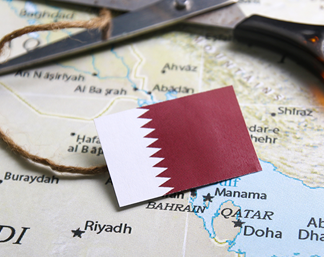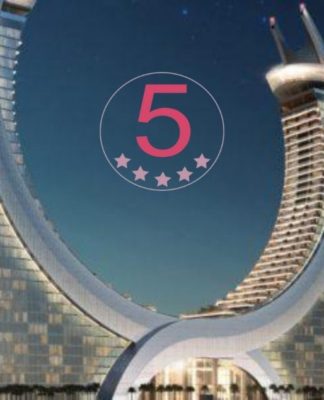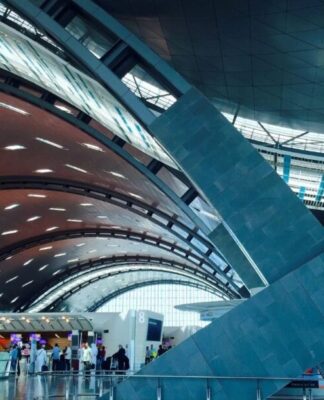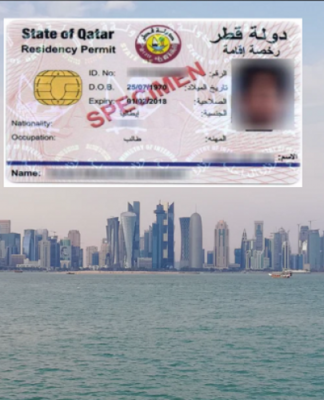The world’s most beautiful mosques (Part I):
1) Sheikh Lotfollah Mosque, Iran

This mosque in Isfahan, a city said by travel writer Robert Byron to rival Athens and Rome, would be known around the world were it in most other countries. Because it is in Iran, however, it has been explored (and Instagrammed) by very few western tourists. Built in the early 17th-century under Shah Abbas I, it does not have a courtyard or minaret, making it architecturally unusual: this is said to be because the mosque was never intended for public use, but for prayer by members of the Shah’s harem. (Picture: AP)
2) Nasir al Molk, Shiraz, Iran

Lesser known still is the Nasir al Molk mosque in the university city of Shiraz in southern Iran. Adorned with stained glass windows – unusual in Islamic architecture – it makes for a spectacular sight in the early morning and late afternoon, when the sun’s rays cause twirling light patterns across the embellished murquanas, a form of architectural ornamented vaulting. (Picture: AP)
3) Blue Mosque, Istanbul, Turkey

Majestic, magnificent and utterly beguiling, the Blue Mosque has six needle-like minarets that form an essential part of Istanbul’s skyline, and is an unmissable part of any break to the city. Terry Richardson, Telegraph Travel’s Istanbul expert, describes how the “interior gleams with the famous blue Iznik tiles from which its name derives.” It was built under the reign of the Ottoman ruler Ahmed I between 1609 and 1616, and is now open to non-worshippers every day outside of prayer times. (Picture: AP)
4) Aya Sofya, Turkey

Opposite the Blue Mosque in the historic Sultanahmet district of Istanbul, the squat, rosy Aya Sofya was built more than 1,000 years before its neighbour. The original “Church of the Holy Wisdom” was built in the 6th century, but the building on the site when the Ottoman Empire took Istanbul was turned into a mosque. Over the 16th and 17th centuries, mihrabs, minbar, and a preaching stand were added to the structure, and the Aya Sofya today is a mixture of Byzantine glittering mosaics and inscriptions from the Koran in Arabic. It is now a museum. (Picture: AP)
5) Blue Mosque, Cairo, Egypt

The Amir Aqsunqur Mosque, which dates from the 14th century, reopened in Cairo in May this year following a 13-year closure to repair earthquake damage. The mosque is part of a funerary complex, containing the mausoleums of its founder Shams El-Din Aqsunqur and his sons. Its current aesthetic reflects the Ottoman style, especially in the Iznik tiles depicting cypress trees and vases holding tulips. (Picture: Alamy)
6) Ibn Tulun Mosque, Egypt

Slightly more low-key but no less beautiful is the Mosque of Ibn Tulun in the Egyptian capital. It was commissioned during the Abbasid era, and although it is believed to be Cairo’s oldest mosque, it has undergone several restorations. It featured in the James Bond film, The Spy Who Loved Me. (Picture: AP)
7) Hassan II mosque, Morocco

The Grande Mosquée Hassan II proudly supports the world’s tallest minaret, at 210 metres. The world’s third largest mosque, it is the only such building in Morocco that non-Muslims can enter. It stands proud on the seafront in Casablanca, and the seabed is visible through the glass floor in the hall. (Picture: AP)
8) Al Aqsa Mosque, Jerusalem, Palestine

The third holiest place in Islam is inside the al-Haram al-Sharif, or the Noble Sanctuary, in the Unesco-listed Old City of Jerusalem. The Al-Aqsa mosque – destroyed by earthquakes and rebuilt several times throughout history – was used as a palace by the medieval Crusaders, but subsequent Islamic caliphates carried out repairs and restored it as a place of worship. Jerusalem’s Old City is currently under Israeli control, and worship at the Noble Sanctuary is limited to Muslims only, but tension between Palestinians and Israelis mean that the former find themselves denied access to the site by the latter’s security forces. (Picture: AP)
9) Al Haram Mosque, Saudi Arabia

The Sacred Mosque, or Great Mosque of Mecca, can accommodate up to four million people, and surrounds the Ka’aba – a cuboid building that is the holiest place in Islam. It covers 400,800 square metres (99 acres), and has outdoor and indoor praying spaces. The mosque is also home to the Black Stone, set into the Ka’aba’s wall by Muhammad before his first revelation, and the Maqām Ibrahim (Abraham’s place of standing). Non-Muslims are not permitted to enter Mecca. Picture: XXXshatha/Wikipedia
10) Al-Masjid an-Nabawi – Medina, Saudi Arabia

Built by the Prophet Muhammad circa 622, this is the second holiest site in Islam after the Al-Haram Mosque in Mecca. It now houses the tomb of the Prophet Muhammad, inside the Green Dome. It has 10 minarets – the tallest of which is 105 metres tall – and a capacity of 600,000, increasing to one million during the annual Hajj period. Non-Muslims are not permitted to enter some parts of the Medina. (Picture: Alamy)
Source: Telegraph.co.uk





























